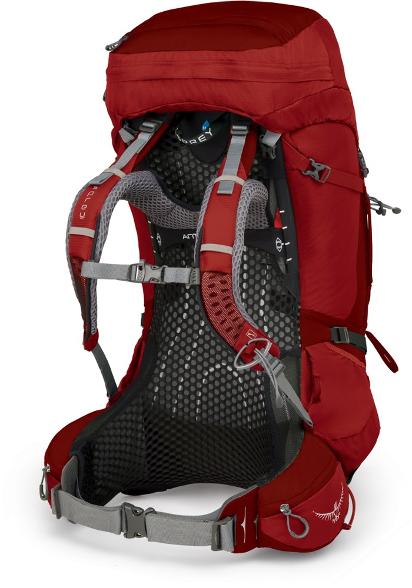Trying a few on is key, with them loaded realistically, but one that looks like it should follow the natural back shape is a good place to start.
All these packs are of type that's currently popular, with a pre-formed frame tucked away behind padding. This is nice, because it means you don't have lots of insulation against your back. Compared to older designs like my 2 old Karrimors with foam and alloy pads that can be moulded to fit the user's back, the design offers a bit less room to optimise the fit, but should be less sweaty. Some tweaking of the frame may still be possible, and the padding can often be adjusted to correct the spacing between the load points.
With a pack in this size range, you want to carry much of the weight on the hips, but it may be heavy, so the load needs to be both stable and close to your centre of gravity. Of course you want the pack to be comfortable for long periods. This means that the frame should match your body shape to some extent - not necessarily follow it perfectly because of the padding and the strap adjustment, but not be wildly different from the body shape the designers had in mind. Small daysacks for light hiking are more forgiving.
You'll need to try a few packs, loaded approximately as you'd carry them, to feel the difference in fits. It's not all that predictable. Back length is another important variable in this size pack, though good packs often come in more than one size and/or have a good range of adjustment*, but a good place to start might be a more curved pack for a more curved back, and a flatter pack for a flatter back. It's possible that someone with a fairly flat back could find that one of the flatter packs fits horribly, worse than the more curved one, while the other is ideal.
* This adjustment range is why the child carrier I had a few years ago was a Deuter, because nothing else I could try on came up tall enough.


